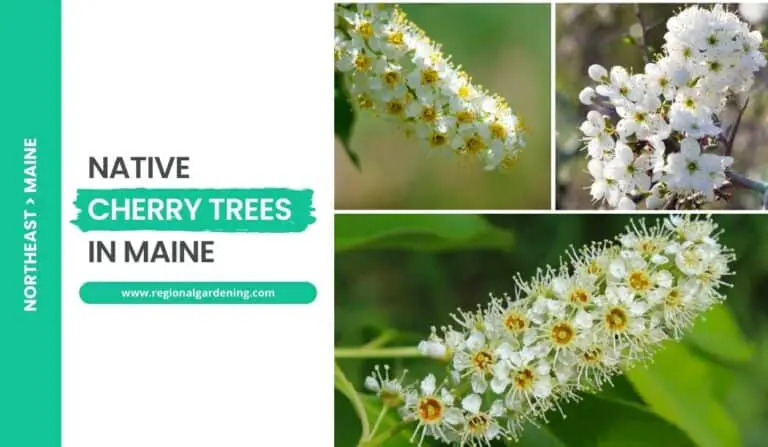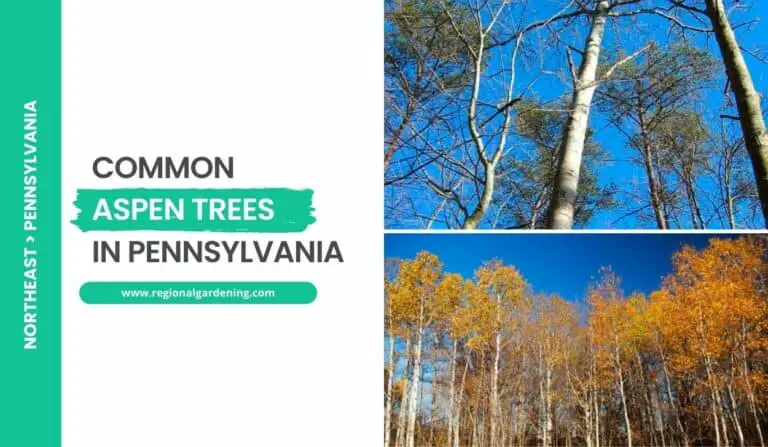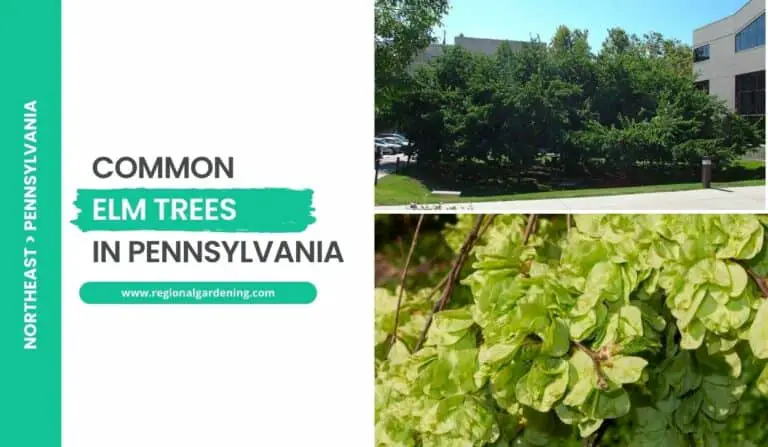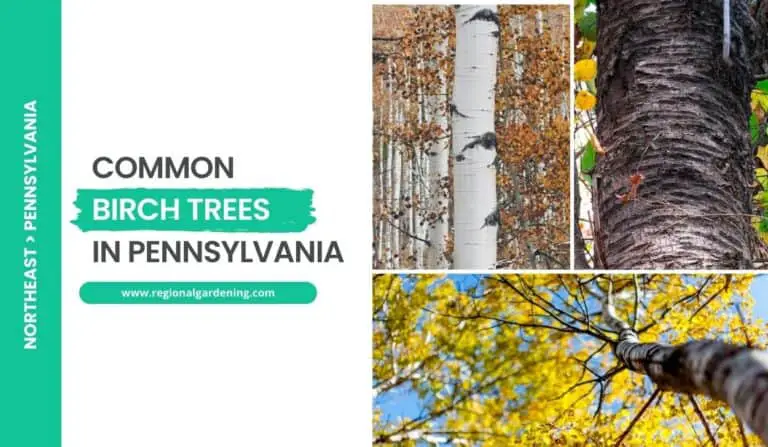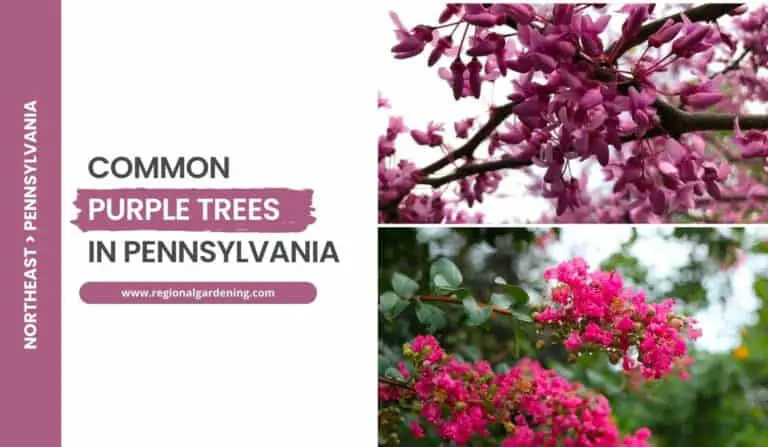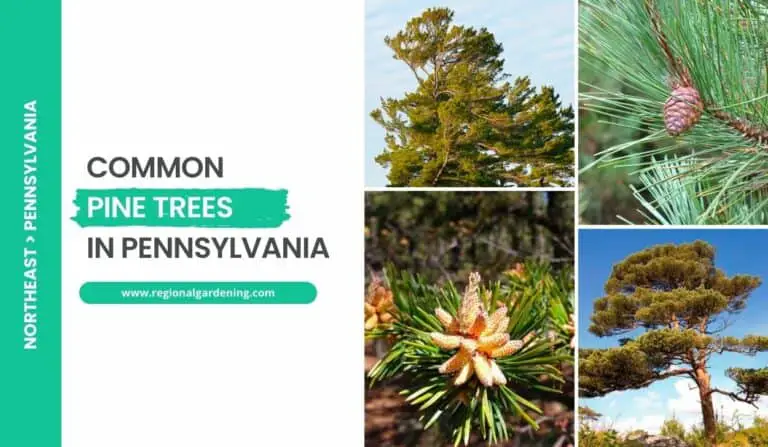5 Common Birch Trees In Maine (Photos & ID Guide)
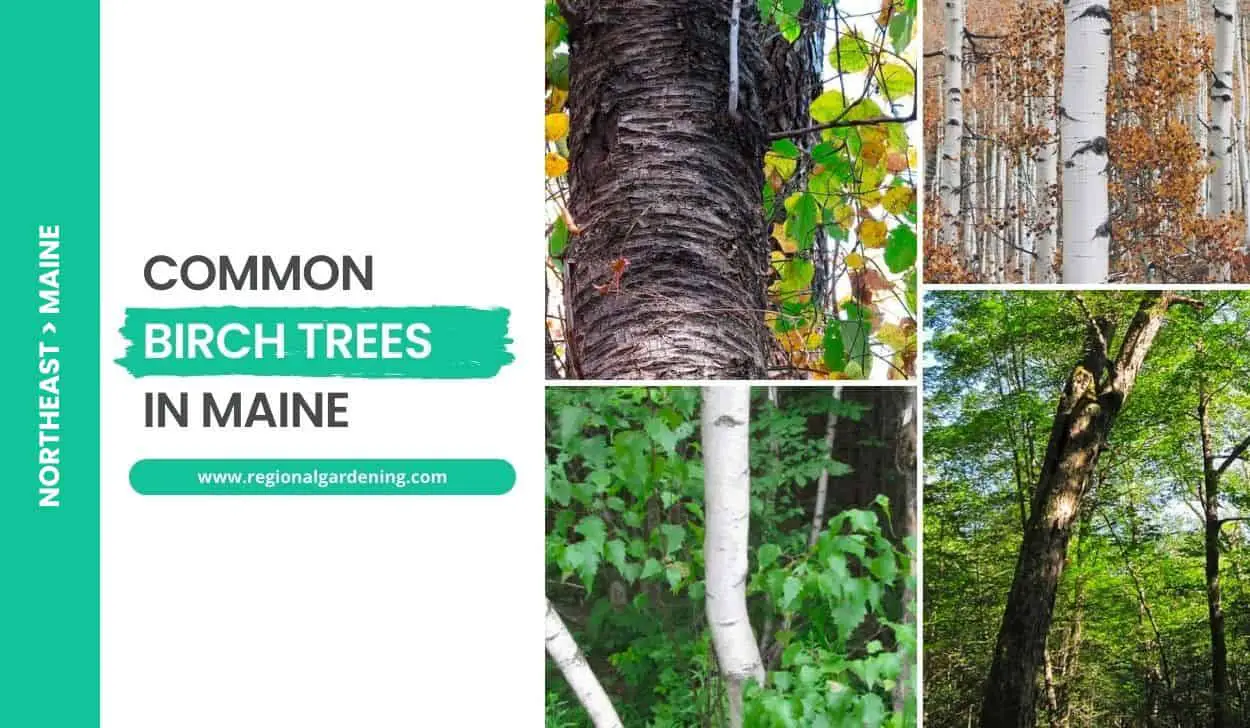
Birch trees, with their distinctive white bark gleaming against the background of greenery, add a graceful beauty to Maine’s forests. These recognizable trees not only beautify the environment, but they also have cultural and useful significance. Birch trees play a significant role in wildlife habitat and traditional crafts, making them an essential part of Maine’s natural heritage.
In this article, we will look at five of the most common birch trees in Maine, delving into their distinct characteristics, ecological roles, and the timeless allure they bring to the state’s woodlands.
Let’s get started with the paper birch, the most important of the birch trees in the wilds of Maine.
1. Paper Birch
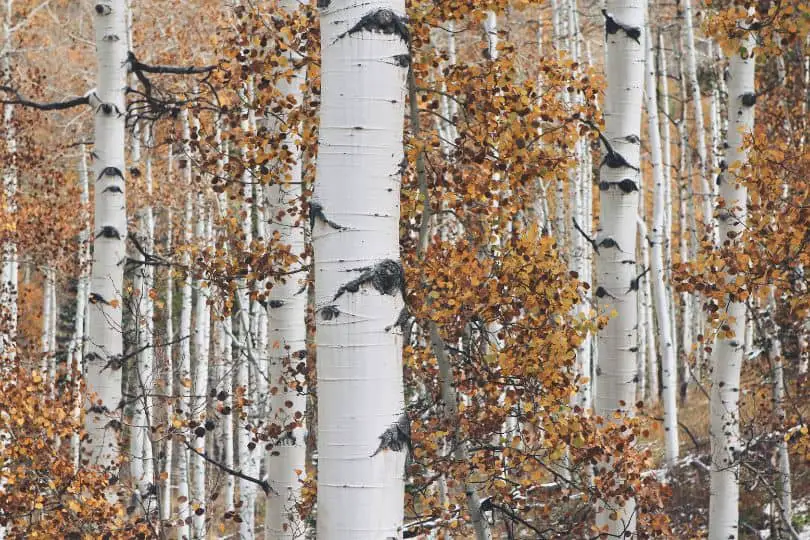
- Scientific Name: Betula papyrifera Marsh.
- Common Name(s): Paper birch, white birch, canoe birch
- Mature Height: 60-70 feet (18-21 meters)
- Native Region: North America
- Flowers: The flowers of paper birch are in catkins and open in early spring before the leaves. Dormant, staminate catkins appear in fall, mostly in clusters of three.
- Fruit: The fruit of the paper birch is a small nutlet, enclosed in a bract.
- Uses: The wood of paper birch is used for woodenware, flatware, turned products, furniture parts, pulp, and firewood. Early settlers historically used the bark for a variety of purposes, including making canoes. The sap of paper birch contains considerable sugar and can be tapped for syrup production.
Paper birches are the most commonly found birch trees in Maine. They are sometimes known as white birch or canoe birch and are a widespread tree in the North American subcontinent. It is usually found in isolated stands or mixed with other tree species. Paper birch can grow up to 60-70 feet tall and 1-2 feet in diameter, and its white bark easily peels into thin, papery sheets. The bark is white on the outside and vivid orange on the inside.
Paper birch grows best in rich, moist soils and is commonly found near streams and on the edges of lakes and ponds in its natural habitat. Short, slender branches form a narrow, regular head on young paper birch trees. In the forest, the stem is free of branches for a significant distance, resulting in an open, slender, and round-topped crown.
Paper birch leaves are alternating, oval, and short-pointed, measuring 2-4 inches long. They are thicker than gray birches and have a dark green, dull upper surface. In the early spring, catkins of the paper birch open before the leaves. Dormant, staminate catkins develop in clusters of three in the fall. Paper birch twigs, unlike yellow birch, are frequently hairy and lack a wintergreen flavor. The buds have a tiny stickiness to them.
Paper birch wood is close-grained, somewhat durable, and robust. It has traditionally been used to make woodenware, flatware, turned items, furniture parts, pulp, and firewood, among other things. The tree was given the nickname “paper birch” because early settlers used its bark. The bark was scraped away in sheets and utilized as a writing surface. The bark was also used to manufacture canoes, giving rise to the common name “canoe birch.”
Paper birch was once one of Maine’s most prized tree species. It was used to produce shoe pegs, which were utilized in shoe production instead of nails.
Maine was also known for making paper birch wood goods such as clothespins, yarn spools, toothpicks, paper roll plugs, and plywood. However, in recent years, manufacturing of these products has transferred to offshore locales.
Paper birch may be a lovely addition to Maine landscapes, with its appealing white bark and open, graceful canopy. It enjoys damp soils and should be grown in well-drained places. Watering regularly, especially during dry years, is critical to its health. Paper birch is low-maintenance and requires little trimming.
However, living trees’ bark should not be damaged or removed because it functions as a protective layer.
2. Sweet Birch
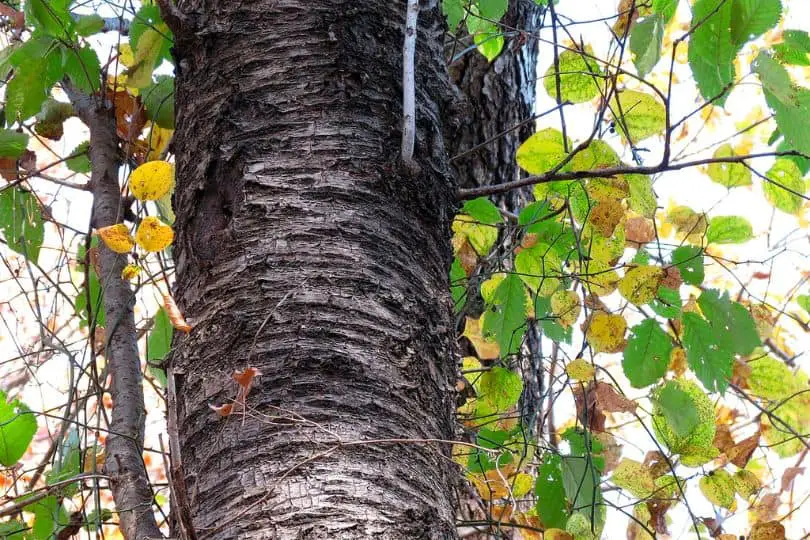
- Scientific Name: Betula lenta L.
- Common Name(s): Sweet Birch, Black Birch, Cherry Birch
- Mature Height: 60–70 feet (18–21 meters)
- Native Region: Eastern North America
- Flowers: Produces catkins, with staminate catkins opening just before the leaves unfold in spring.
- Fruit: The tree produces small, winged seeds called samaras.
- Uses: The wood of the sweet birch is highly valued for its hardness and strength, making it suitable for furniture manufacturing. It is also used as firewood and for pulpwood in limited amounts. Historically, the branches and bark were used to extract wintergreen oil, known for its medicinal value.
Betula lenta, often known as Sweet Birch or Black Birch, is found throughout the southern third of Maine, though it is not common. This lovely tree grows well near streams or in damp, rich upland soils. It has a tall, black stem and spreading, slender branches with drooping tips. When exposed to full sun, the tree’s beautiful, slender head becomes spherical and symmetrical.
The Sweet Birch has an appealing bark and grows to a mature height of 60 to 70 feet with a diameter of 1 to 2 feet. Old trees have dark to virtually black bark that forms irregular, thick plates on the trunk. Young trees and branches, on the other hand, have smooth, lustrous, dark brown bark with a tinge of red. When the bark of the Sweet Birch is scented, it provides a strong wintergreen flavor.
Sweet Birch leaves are aromatic, oval, or slightly oblong, and contain sharp teeth around the edges. They are 3 to 5 inches long and have a dark green and dull upper surface with a light yellow-green below surface. The tree’s blooms are known as catkins. In the spring, staminate catkins open shortly before the leaves, making a lovely show.
The Sweet Birch thrives in damp, rich soils and requires little care in Maine environments. It requires adequate irrigation to stay healthy, especially during dry years. It prefers full sun but may tolerate moderate shade. It is recommended that enough room be provided for the tree to mature and develop its graceful form while planting.
The Sweet Birch, also known as Cherry Birch due to its bark’s resemblance to black cherry, has a variety of purposes. Its robust and solid wood is highly valued in furniture manufacture and can be nicely polished. It is also a good source of firewood.
While wintergreen oil was traditionally extracted from the branches and bark for its therapeutic benefits, this practice is less common now. However, a small portion of the tree is still exploited for pulpwood.
3. Gray Birch
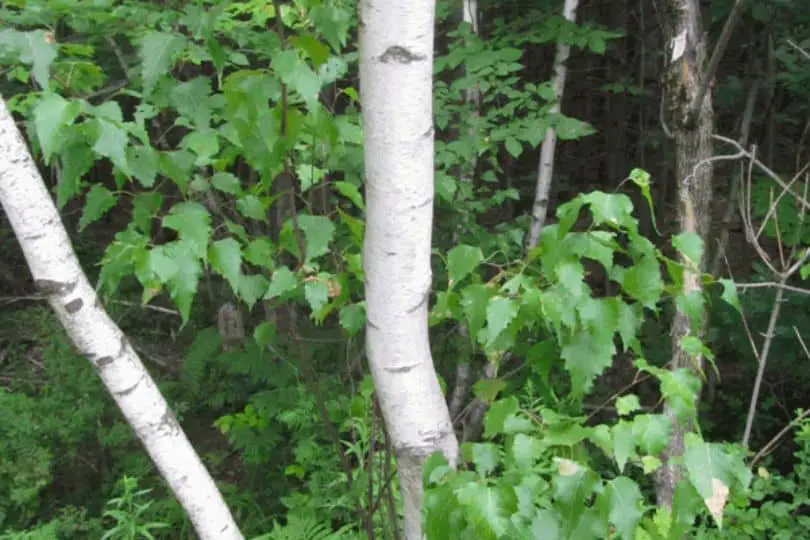
- Scientific Name: Betula populifolia Marsh.
- Common Name(s): Gray Birch
- Mature Height: 20-30 feet (6-9 meters)
- Native Region: Found statewide in Maine, but abundant in southern and eastern sections.
- Flowers: Male flowers produced in catkins, appearing in early spring before the leaves.
- Fruit: No significant fruit production.
- Uses: Occasionally used for pulp and firewood; in the past, it was used for paper roll plugs.
Gray birches are the shortest birch trees in Maine. It is not highly valued, but it is found statewide to some extent, being more prevalent in the state’s southern and eastern regions. Gray birch is commonly found in old fields, burns, and densely forested places.
This little tree grows to a height of 20-30 feet (6-9 meters) and has a diameter of 4-8 inches. When not crowded, it grows in clumps and leans, and its branches are short, slender, and frequently pendulous, bending toward the ground. The tree’s head is long, slender, pointed, and open. The bark is compact and firm, with a grayish-white or chalky exterior layer and an orange interior layer.
Gray birch leaves are 212-23 inches long, slender, long-pointed, triangular, alternating, and double serrated. The leaves’ upper surface is dark green and shiny. The leaves flutter in the slightest breeze, mimicking those of poplars, giving the tree its scientific name, Betula populifolia, or “birch with poplar leaves.”
Gray birch flowers come in catkins, with male flowers blooming before the leaves in early April. This tree’s twigs are the thinnest of any native hardwood. They have a rough, warty surface and are strong, wiry, dull gray or brown, hairless. Dead twigs tend to cling to the trunk, and the tree’s dingy bark also aids in identification.
Gray birch is adaptable to a wide range of soils and can endure moderate drought conditions. For optimal development, it prefers full sun to partial shade.
Because its branches can be narrow and twisted, pruning should be done deliberately to retain an attractive shape. Watering is recommended regularly during dry months, especially during the first few years of growth.
Despite its low commercial value, gray birch is occasionally used for pulp and fuel. It was previously utilized for paper roll plugs.
It can be planted in Maine landscapes for its aesthetic value, particularly in naturalized areas or as part of a mixed woodland. Its distinctive bark and fluttering foliage provide charm to the scene.
4. Yellow Birch
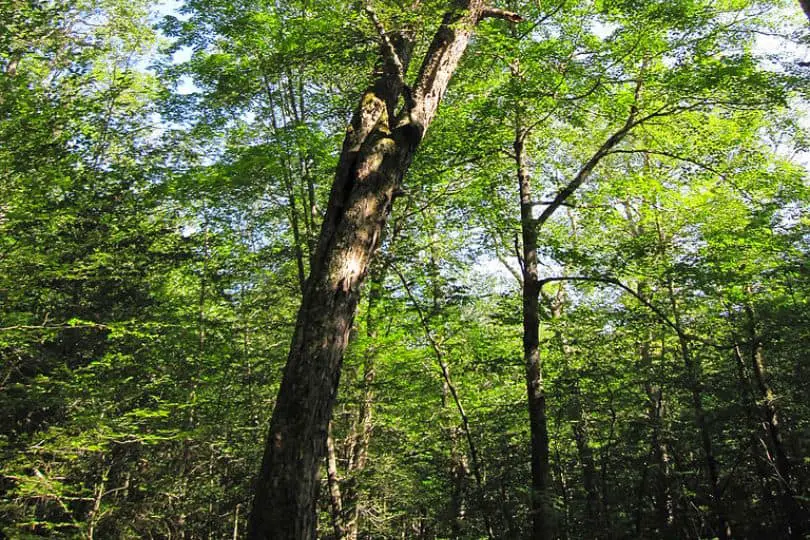
- Scientific Name: Betula alleghaniensis Britt.
- Common Name(s): Yellow Birch
- Mature Height: 70–85 feet (21-26 meters)
- Native Region: North America
- Flowers: The flowers are in catkins. In winter there are 3–4 pre-formed staminate catkins on the shoots, but not in clusters. They open in the early spring.
- Fruit: The fruit is a small winged nutlet, often clustered on short, drooping stems that persist through the winter.
- Uses: The wood of the yellow birch is hard, strong, and takes a good polish. It is used for furniture, flooring, woodenware, lumber for interior finish, plywood, railroad ties, pallets, pulp, gunstocks, and dowels. It is also an excellent firewood. In the past, wintergreen oil was distilled from the twigs and branches.
Yellow birches are the largest of the native birch trees in Maine. It has a diameter of up to 3 feet and a height of 70 to 85 feet (21-26 meters). In open regions, the spreading branches form a large, round-topped head, whereas in wooded areas, the head is uneven. In chilly, wet areas throughout Maine, it is usually found combined with beech, sugar maple, or hemlock.
This tree has distinctive characteristics such as lustrous, silvery-gray, or yellowish-brown bark on young tree branches and stems that separates into loose, thin, horizontal, frequently ribbon-like layers. The bark of aged trees is separated into large thin plates and becomes dull gray or black. Yellow Birch leaves are ovate or almost oblong, with doubly serrated margins. They are very similar to the eastern hophornbeam. The leaves’ upper side is dull, dark green, and hairy.
Catkin blossoms appear on the yellow birch in early April. In winter, there are 3-4 pre-formed staminate catkins on the stalks rather than clusters of blooms. The twigs are yellowish to dark brown, hairy, and have a lovely wintergreen flavor.
Yellow birch wood is robust, sturdy, and weighty, with a reddish tint in the heartwood. It is used to make furniture, flooring, timber, plywood, and woodenware, among other things. It is also well-known for its veneer wood and firewood properties. Wintergreen oil was previously distilled from the twigs and branches.
The yellow birch is native to Maine and thrives in chilly, damp environments. It thrives in mixed stands with other tree species such as beech, sugar maple, and hemlock, and likes shady locations.
It is critical to give appropriate moisture and shade to yellow birch trees in Maine settings while planting and caring for them. Mulching around the tree’s base can assist in retaining moisture and keep the soil from drying up. Watering regularly during dry seasons is also beneficial.
Yellow birch trees are regarded for their attractive bark, which enhances the visual appeal of the landscape. They can be planted as individual trees or in groups to create a woodland look. Furthermore, the yellow birch serves as a vital habitat and food source for a variety of wildlife species, making it an ecologically valuable tree in Maine’s landscapes.
5. Mountain Paper Birch
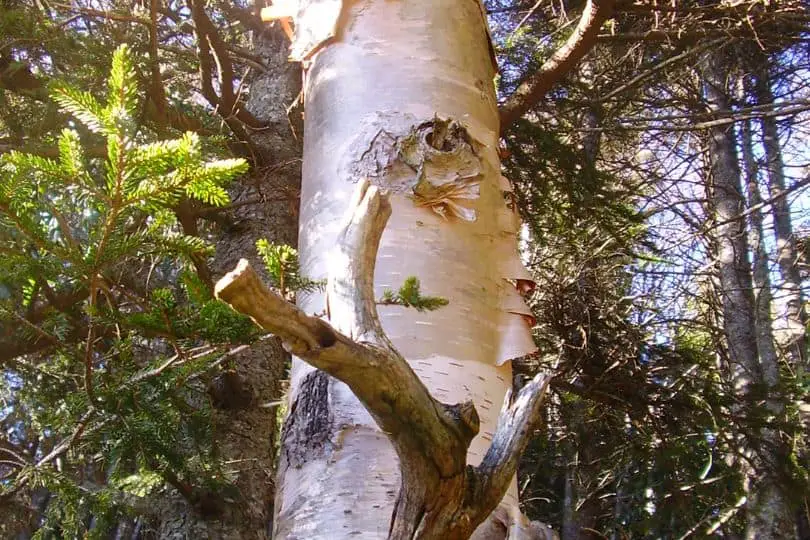
- Scientific Name: Betula cordifolia Regel
- Common Name(s): Mountain paper birch
- Mature Height: Can grow up to about 60 feet (18 meters) in height
- Native Region: Maine, particularly on mountain slopes, coastal headlands, and islands east of Mount Desert Island
- Flowers: The flowers are borne in catkins. Dormant male catkins in clusters of 2–4 are visible during winter. Both male and female catkins expand in spring.
- Fruit: The fruit is a tiny nutlet with two small lateral wings. It matures in the fall and is dispersed during the fall and winter.
- Uses: The wood of mountain paper birch is similar to that of paper birch and can be used for turnery products, cabinetry, pulp, and fuel.
Mountain paper birch, scientifically known as Betula cordifolia, is a species that is closely related to paper birch. Some authors have categorized it as a subspecies of the paper birch. This deciduous tree can be found in a variety of habitats throughout Maine, including mountain slopes, coastal headlands, and islands east of Mount Desert Island.
Mountain paper birch grows in clumps of numerous stems, reaching heights of up to 60 feet and diameters of one foot or more. Young trees and branches have bark that is dark reddish-brown and does not flake. The bark of the tree matures into thin, papery layers that range in color from pale with a pinkish or salmon-colored tinge to reddish-brown or bronze.
Mountain paper birch leaves are egg-shaped with heart-shaped bases, sharply pointed, and coarsely doubly-toothed. Dormant male catkins in clusters of 2-4 can be spotted over the winter. In the spring, both male and female catkins expand, adding visual interest to the tree. The tree bears tiny nutlet fruit with two small lateral wings in the fall and winter months, which are scattered.
The wood of the mountain paper birch is comparable to that of the paper birch in terms of usage. It can be used to make turnery, cabinetry, pulp, and fuel. Its distinctive papery bark also lends visual interest to landscapes.
Mountain paper birch can be a lovely addition to Maine landscapes, particularly in hilly and coastal areas. It grows best in well-drained soil and can withstand a variety of situations.
It is critical to water the tree regularly during dry seasons, especially when it is first planted, to maintain optimal establishment. It is also important to offer some wind shelter, as the tree is prone to wind damage.
Similar Articles
- Common Spruce Trees In Maine
- Common Oak Trees In Maine
- Common Ash Trees In Maine
- Common Pine Trees In Maine
- Common Maple Trees In Maine
- Common Cedar Trees In Maine
- Native Aspen Trees In Maine
- Native Hickory Trees In Maine
- Common Cherry Trees In Maine
- White Flowering Trees In Maine
Native Birch Trees In Maine – Sources
The Regional Gardening team makes sure that the information in our articles is accurate by only using sources that are known to be trustworthy. Some of these sources are peer-reviewed journals from government agencies, well-known universities, and scientific research organizations.
- Forest Trees of Maine, Maine Department Of Agriculture, Conservation & Forestry
- Identify Maine’s Common Foliage Trees, Maine Foilage
- Plants for the Maine Landscape, University Of Maine Cooperative Extension.
- Gardening to Conserve Maine’s Native Landscape, University Of Maine Cooperative Extension


